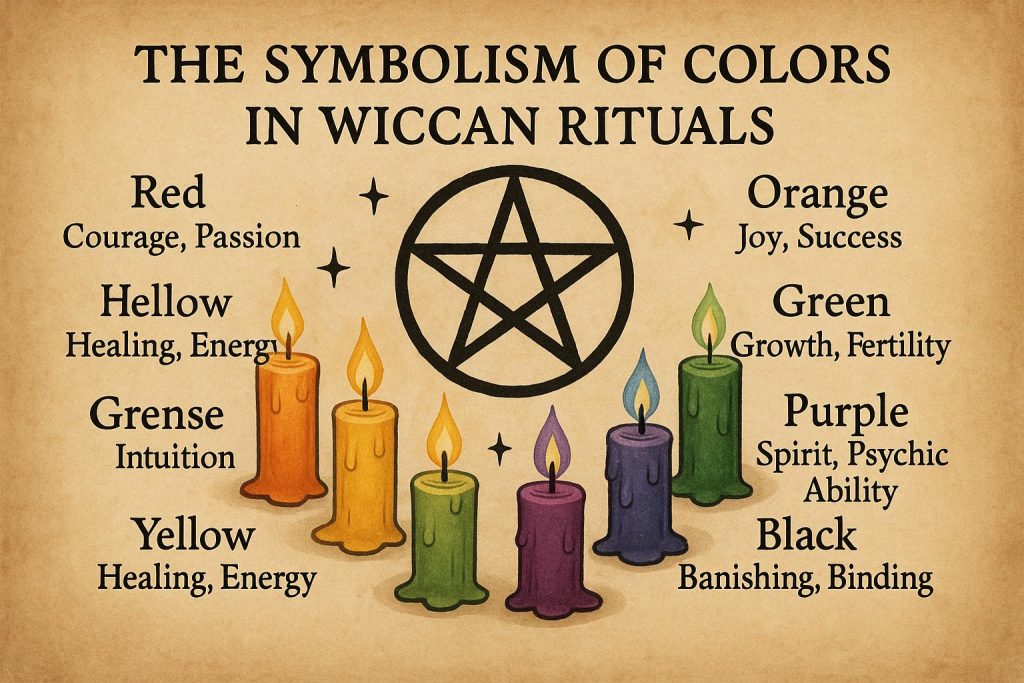
Understanding the Symbolism of Colors in Wiccan Rituals
Wiccan rituals are deeply entwined with the symbolic use of colors, as practitioners aim to bolster the energies connected to distinct practices and intentions. Colors are not just mere visual supplements; they hold significance and purpose, contributing to the overall effectiveness of the ritual. Essential to this practice is understanding how each color embodies certain meanings and energies, making the selection of colors a critical aspect of conducting rituals.
The Role of Color in Wicca
In the Wiccan tradition, colors play an indispensable role. They are often aligned with the four classical elements—earth, air, fire, and water—and the corresponding directions: north, east, south, and west. This alignment provides a foundation for selecting colors during rituals based on the intended outcome and its elemental connections. The visual aspect colors introduce can distinctly set or enhance the ambiance of a ritual. Consequently, Wiccans integrate colored candles, fabrics, and various tools to direct and concentrate energy effectively.
Common Colors and Their Symbolism
While interpretations of color symbolism can differ slightly amongst individual practitioners, there is a generally accepted consensus about fundamental color meanings within Wiccan circles. Understanding these associations can be pivotal for anyone looking to deepen their practice.
White: In Wiccan rituals, white often signifies purity and protection. Practitioners employ white to cleanse spaces and individuals, as it embodies balance and the potential to neutralize negativity. White is related to the element of air and symbolizes truth and purity, often considered universal, capable of substituting other colors when needed.
Black: Despite common misinterpretations linked to dark magic, black in Wicca symbolizes protective virtues. It is associated with the power to absorb and dispel negative energy, often utilized in banishing rituals. Black offers grounding and stability, aiding in shielding individuals from harmful influences.
Red: An energetic and passionate color, red is predominant in rituals involving love, strength, and courage. Linked to the fiery element of fire, red steers rituals that focus on enhancing vitality and endurance. Its vibrant energy is also conducive to manifesting desires and intentions with fervor.
Green: Symbolic of growth, fertility, and abundance, green is closely linked to the element of earth. It is a dependable choice for rituals centered on prosperity, renewal, and nurturing growth—be it personal, financial, or ecological.
Blue: Often associated with peace, healing, and spiritual depth, blue corresponds with the water element. It finds its place in rituals aimed at increasing inspiration, wisdom, and emotional healing. Blue offers a calming presence, suitable for regaining equilibrium and seeking insight.
Purple: This color symbolizes profound spirituality and intuition. Purple connects strongly with the divine and the mystique of spiritual realms. Used primarily to seek spiritual insight and transformation, purple can aid in enhancing one’s intuitive abilities and spiritual understanding.
Yellow: Representing intellect, clarity, and effective communication, yellow shares a connection with the air element. It is a great aid in rituals designed to boost confidence and creativity, helping illuminate the path ahead with clarity.
Applying Color Symbolism in Rituals
Selecting colors for a ritual involves more than preference—it requires thoughtful alignment with symbolic characteristics. Suppose a practitioner wishes to conduct a ritual for prosperity and abundance; integrating green-colored elements is intuitive due to its rich connotations with growth and fertility. Beyond basic symbolic associations, many Wiccans take into account other factors like astrological correspondences and their intuitive feelings toward a particular color. This multifaceted approach ensures a more personalized and resonant use of color in their practices.
The effectiveness of using color symbolism in rituals often hinges on the practitioner’s personal connection to the color chosen, as well as their confidence in aligning that color’s energies with the desired intention. A well-thought-out color choice can magnify focus and lend power to the ritual outcomes, aiding practitioners in achieving their objectives with greater efficacy.
Conclusion
An in-depth comprehension of color symbolism within Wiccan rituals offers practitioners enhanced potency and nuance in their practices. By carefully aligning color selections with intended energies and outcomes, Wiccans can significantly amplify their focus and the overall impact of their rituals. Various resources are available for those interested in further exploring the intricacies of color usage, and they provide a wealth of knowledge on the subject. Through these explorations, one can uncover a broad spectrum of color symbolism that varies across different Wiccan traditions. This journey can deepen one’s engagement and proficiency in the intriguing and impactful world of color symbolism in Wiccan rituals.
